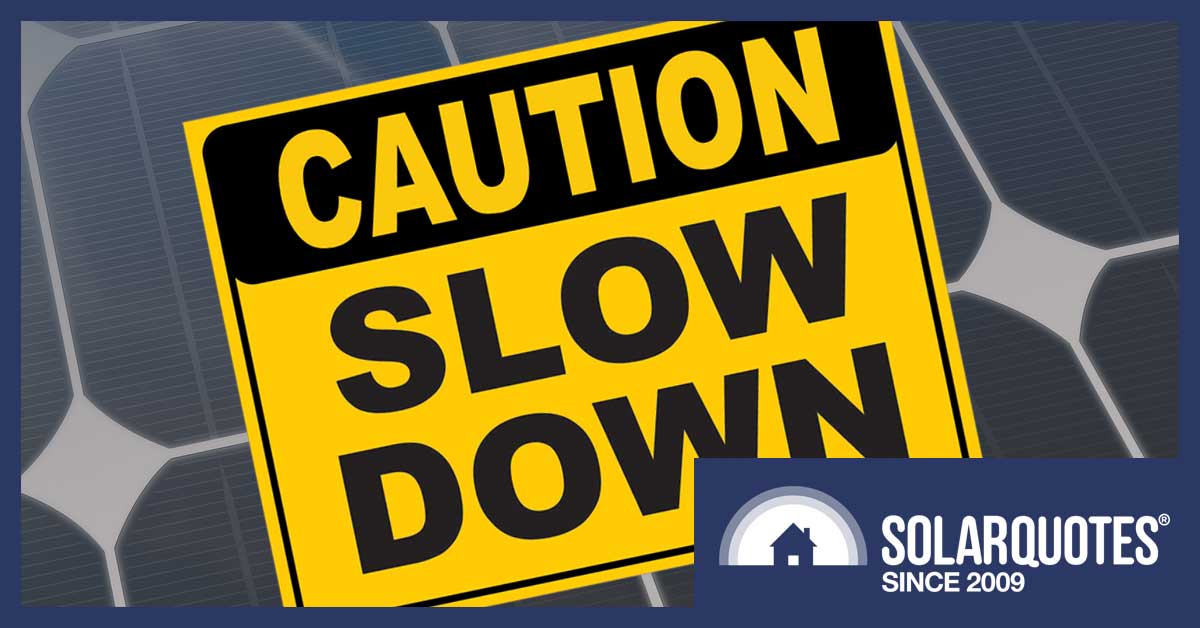
The “solar rebate” does not end this year. In fact rooftop solar power may be cheaper early next year.
DON’T PANIC! Despite attempts by dodgy advertisers1 to convince you otherwise, the “solar rebate” isn’t ending any time soon. Renewable energy certificates (called STCs) will still be lowering the cost of rooftop solar for years to come. To be precise, for another 11 years, 1 month, and 2 days.
If you absolutely have to panic, if it’s something you really enjoy and you want to get a good bit of frantic fluster in right now, then I suppose you could freak out, just a little, over the fact the STC discount for rooftop solar power systems will fall by 8.3% at midnight on the 31st of December. You’ll know exactly when this happens because there will be a big countdown on the radio and TV.
But if you do panic over this you’re being a bit silly because:
- All else equal, from the 1st of January, you will only have to pay around $333 extra for a 6.5 kilowatt solar system. If it currently costs $5,000 that’s 6.6% more. If it currently costs $7,000 that’s 4.7% more.
- Because of the way the solar industry and humans work all else won’t be equal. This means you may not have to pay anything extra at all.
In this article I’ll go over:
- Exactly how much the “solar rebate” will reduce each year so it’s clear it’s not an amount that makes it worthwhile to rush into buying solar power and potentially make a mistake you’ll regret.
- Why a solar system installed early next year is unlikely to jump up in price by as much as the reduction in STC subsidy. This means there is even less cause to panic.
- Finally, I’ll mention why it still makes sense to install solar panels as soon as you reasonably can — after doing enough research to be certain you’ll be getting a quality system you’ll be happy with.
But before I do that I’ll explain how a different rebate only available in Victoria — the Victorian Home Solar Homes Program — is being reduced by $337 at the start of the new year.
Victoria’s Solar Homes Rebate Will Fall
If you meet the requirements and obtain approval this year, the Victorian Solar Homes Program rebate will reduce the cost of a solar system by up to $2,225. If you want to apply this year the soonest you can do this will be at noon on Monday the 2nd of December.
Because of unavoidable delays with the scheme, you won’t be getting solar installed this year even if you already have approval but haven’t arranged an installation yet. This means you can’t avoid the decline in the national “solar rebate” at the end of the year, but you can — hopefully — avoid the end of year fall in the Victorian Solar Homes rebate from $2,225 to $1,888.
Note that because of its poor design, the Victorian Solar Homes rebate is a a pain-in-the-neck program2 and increasing numbers of people are giving up and deciding to get solar panels without it3.
The “Solar Rebate” Ending Is Online Nonsense
If you have the internet and so aren’t reading this by peeking through your neighbour’s curtains, you may have noticed ads appearing on Facebook4 and other sites saying you have rush and get solar panels now because the “solar rebate” is ending or trying to imply that’s the case without directly saying so. Either way they are attempting the old hard sales tactic of convincing people they have to act now or miss out.
My favorite is this Facebook ad that tries very hard to create the impression you have to hurry while technically not lying at all:
“This could be your last chance to take advantage of the solar rebate before Summer starts!”
I suppose that with only a couple of days to go until the end of November, this — technically — would be your last chance to to take advantage of the “solar rebate” before summer. There will be no change in the “solar rebate” between November and December, but since that’s when summer officially starts they are not — technically — lying. I’ll leave it up to you to decide if they are — technically — being misleading.
Phone Through For Piss Poor Promise
It’s reasonable to think companies scaring up business by lying or implying the “solar rebate” is ending are trying to line up work for before the end of the year, but often this isn’t the case. Sure, they’ll probably do what they can before the year ends, but quite often they are lining up work for early next year.
This may seem odd given how much effort they are putting into pushing the “solar rebate” is ending bandwagon, but what they’ll generally do if you contact them is say that by giving them a deposit you will lock in this year’s price no matter when they get around to actually installing it.
Gee, a quote where the price is the final price. I wonder if any other business is aware of this amazing innovation? (If you spotted that I’m being sarcastic, well done!)
How To Calculate Your “Solar Rebate”
The easiest way to calculate your “Solar Rebate” is to use the SolarQuotes’ STC Calculator (much easier to use than the Clean Energy Regulator’s calculator).
However, I’ll explain how to manually calculate your “solar rebate”, so you can understand just how much it will decrease at the end of each year and why. But first I have to appease any pedants out there who are infuriated by my use of the term “solar rebate” and don’t regard my use of “scare quotes” as an adequate prophylactic against their ire.
“Solar Rebate” Not Actually A Rebate
The correct name of the “solar rebate” is the Small-scale Renewable Energy Scheme or SRES and it’s not a rebate. A rebate is when you pay money and then get some of it back. As STCs normally reduce the price the customer pays, the “solar rebate” should be called a subsidy or incentive instead.
But rather than rail against the incorrect use of the term I’ve decided to take the easy way out and simply let it die a peacefully death in 11+ years. This may seem lazy, but I just call it picking my battles. And the battle I pick instead is three rounds of original Mortal Kombat versus the office champion, Ned.5
The “Solar Rebate” Is Being Slooooowly Phased Out
Small-scale Technology Certificates or STCs are created when rooftop solar is installed. They are worth money. You can hang onto them if you want, but normally they’re used by the installer to lower the cost of solar power. Any quotes you get will assume their value is coming off the price.
STCs are worth a maximum of $40 each and the scheme is designed to keep them close to that amount. At the moment they are around $37.
The number of STCs you will get and the amount of money they’ll save you is easy to determine if you follow my not-at-all patented 3 step system:
Step 1: Check your Zone
The country is divided into 4 Zones with sunnier ones getting more STCs. Zone 3 is the most populous and contains the capitals Adelaide, Brisbane, Canberra, Perth, and Sydney. In this region each kilowatt of new solar panel capacity receives 1.382 STCs for each remaining year of the “solar rebate” scheme.
If you are in Melbourne or Tasmania you are in Zone 4, which is the second most populated. Thanks to lower levels of sunshine you’ll get 14% fewer STCs than those jammy Zone 3 bastards.
Step 2: Do Some Multiplication
To work out the total number of STCs for a system multiply these three figures together:
- The size of the system in kilowatts
- The figure for your Zone
- The number of years left in the scheme
The number of years left in the scheme is easy to work out as it is 2031 minus the current year. So for this year it is:
2031 – 2019 = 12
Or you can just look up how many years are left on this graph:
If you live in Zone 3, like most people do, and are getting a 6.5 kilowatt solar power system installed this year, the number of STCs it would receive would be:
1.382 * 6.5 kilowatts * 12 years remaining in scheme = 107 STCs
If it is installed next year instead then it would be:
1.382 * 6.5 kilowatts * 11 years remaining in scheme = 98 STCs
The amount of STCs you receive are rounded down, so there’s no need to worry about fractions of an STC.
Step 3: Decide on an STC price
The “solar rebate” scheme is designed to keep the value of STCs close to their maximum of $40 each. At the moment they are currently worth around $37. Because of administration costs I think we should treat the value of STCs as being a couple of dollars lower, but to keep things simple I won’t worry about this and will just use the current $37 price. This means the STCs generated by installing a 6.5 kilowatt system in Zone 3 this year will be:
- 107 STCs * $37 = $3,959
If it is instead installed next year the STCs will be worth:
- 98 STCs * $37 = $3,626
So, if all else is equal, getting a 6.5 kilowatt system installed this year instead of next year will save $333. But all else won’t be equal. Before I get into that, since I am in a graph-making mood, here’s one showing how many STCs will be received by a 6.5 kilowatt solar system in Zone 3 and and how much they will be worth, assuming an STC price of $37:
Note I have not adjusted the dollar values above for inflation. If the average inflation rate is 2% then $296 in 2030 will only be worth $238 in today’s money. The fact that inflation is constantly nibbling away at the real value of STCs is often overlooked, but over a few months — the maximum time most people go from deciding to get solar panels to installation — it’s not worth worrying about.
New Year — Old Prices?
If all else is equal, for the majority of Australians a 6.5 kilowatt solar system would become $333 more expensive on the 1st of January. But price increases don’t work that way. Especially not in the solar industry.
While they often appear superhuman, solar installers are mere human beings and so have children to feed and Tesla monster trucks to buy. For this reason they are not going to want to absorb the cost of the 8.3% fall in STCs received per kilowatt. But, because they are in a very competitive industry, many of them will soak up at least some of it. They’re able to do this is because the cost of solar hardware keeps falling. This isn’t a smooth process. There are some ups among the downs. But it is mostly down. Just the other day I was told the price of solar panels could fall by another 4-5% over the next two months.6
Another reason is supply and demand. From now until Christmas is the busiest time for installers, but after that work falls off a cliff and early in the year is their slow time. After the excesses of the holiday season people tend to spend less on everything, even including things that save them money such as solar power. So if you want an installer to squeeze your system in this December, because they’re so busy they are likely to charge more for their time than they would early next year.
Understand Your Quote
If you are just considering getting solar now there is very little chance it will be installed before the end of the year and if you get a quote for a system this year it’s important to know whether or not the price will be bumped up if it’s installed next year.
Some installers will quote a final price, while others quote a price that varies according to the number of STCs received. In the latter case, the amount paid depends on the installation date. If the installer makes it absolutely clear how changes in STCs affect the quote, that’s fine. But if they don’t and you end up paying more than you expected, I consider that dodgy.
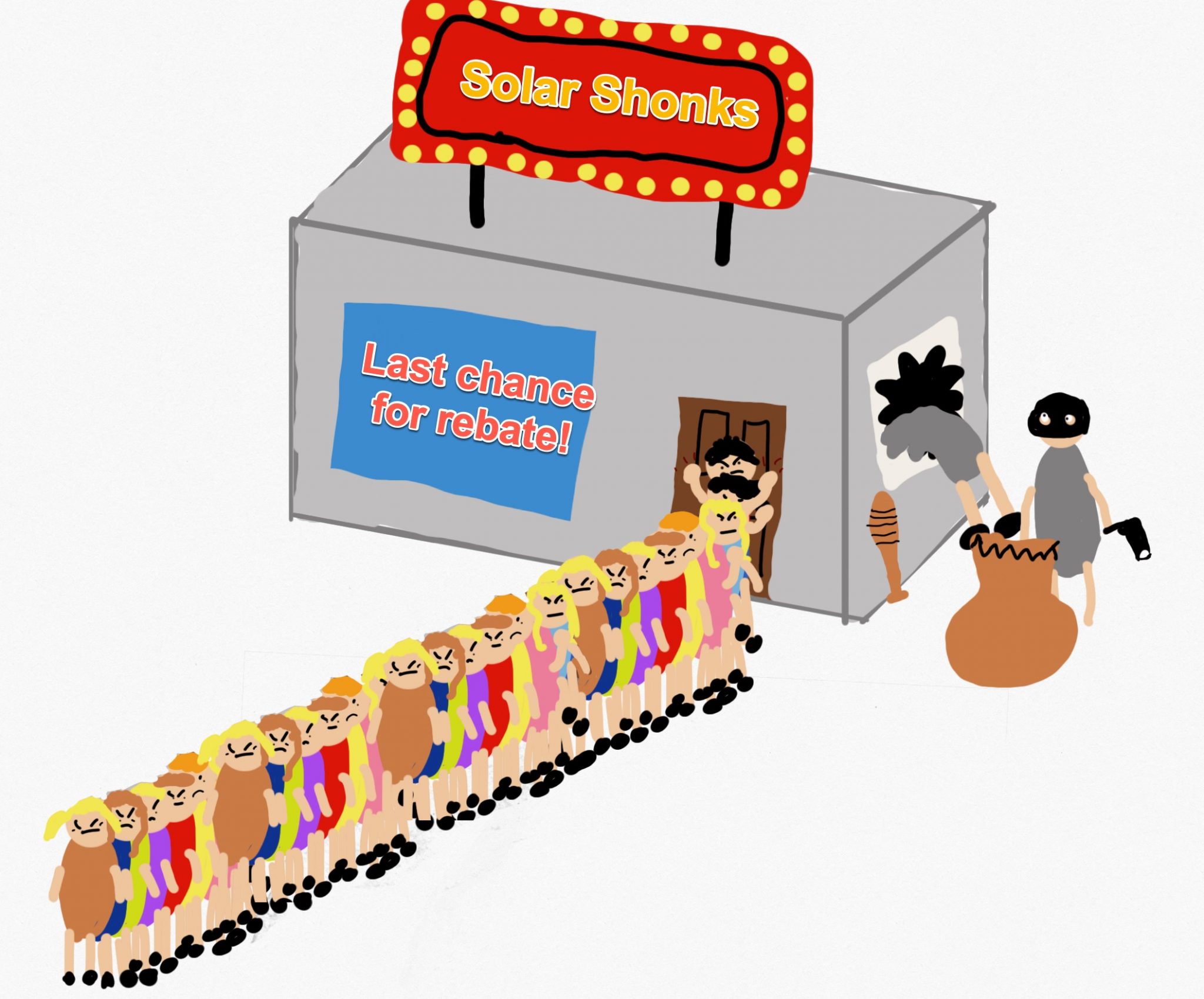
Image Credit: Emjay Peacock
Getting Solar Panels Soon Still Makes Sense
There is no need to rush into getting solar power in the next 4 weeks. Take enough time so you can be sure you know what you want. Don’t feel pressured by dodgy ads to rush into getting solar panels before you’re prepared. But once you are prepared, get out there and grab it. There’s gold in that there sunlight. So do your research, find a great local installer, but please don’t tell them you need it installed before December 31st, because you really don’t.
Footnotes
- Especially some shonky solar lead generation companies – who a) whack ads on Facebook implying the rebate is ending and b) implore you to enter your contact details so they can show you how to get solar panels ‘for almost nothing’. ↩
- It may be a pain-in-the-neck program for households, but for installers it’s much worse. The pain goes all the way down the spine to the far end. ↩
- Since the start of the Solar Victoria designed shambles the number of Victorians who don’t want the disastrous VIC rebate has risen from 15% to 24% according to thousands of Victorians who have used SolarQuotes over that period ↩
- I hope Facebook bears no relation to the stamp book I had when I was a kid which contained actual stamps. I was very conscientious when I was younger and liked to keep a record of all my stampings. I stamped on a beetle, I stamped on an ant, I stamped on a snail, I stamped on a snake… ↩
- But Ned will have to play with one head tied behind his back since he is not just the best player in the office, he is an actual Mortal Kombat Champion who just happens to work in the office when he’s not pulling out people’s spines with a game controller. ↩
- Looking at silicon prices in China I’m not convinced. However, the person who told me this is a lot smarter than I am. But not quite as good looking. ↩


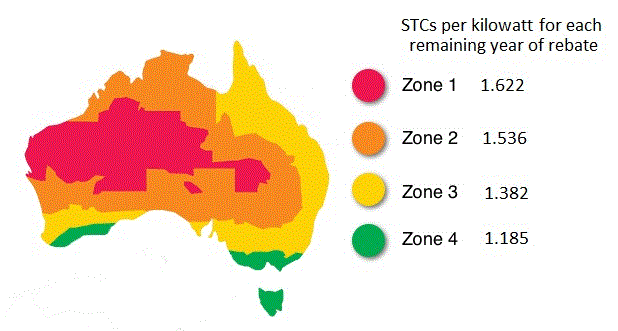
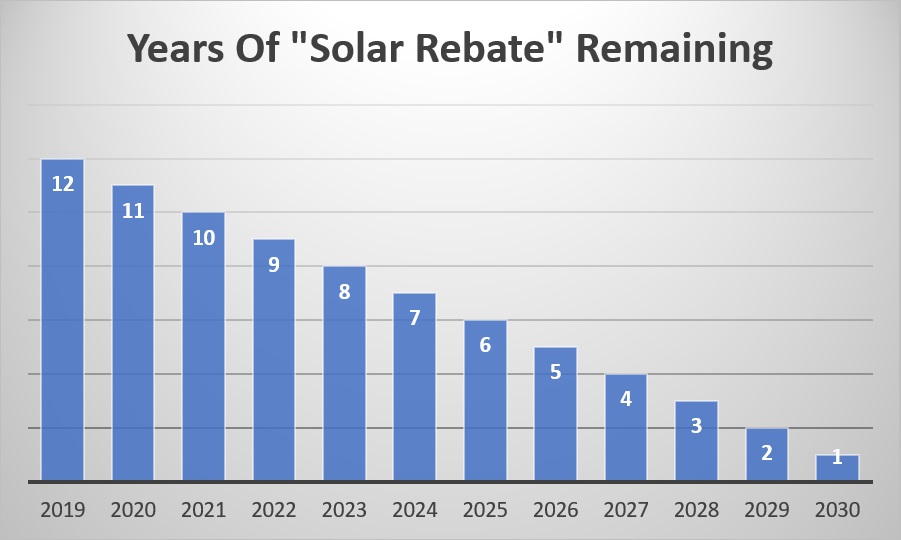
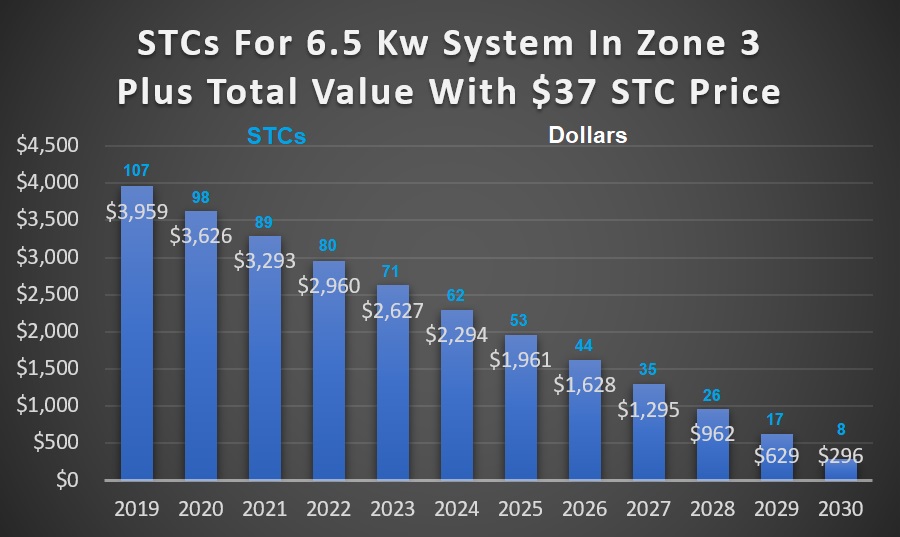
 RSS - Posts
RSS - Posts



Good article – lot of shonks out there – one particular coy inundates u with weekly promos and panic marketting – good to have objective info on systems,designs etc for Oz conditions. Get the truth out there about payback periods for batteries. Some sales people should be jail for their statements! v reality the regulator/electricity Authority tend to home in on the Owner and not the Installer/trades for their installation/ i found that a bit strange! the owner is left holding the baby aand not the installed/trade.Finn’s book is a compulsory acquisition!
Mine SCT discount was $4209 for a 7.4kW system in zone 3 which worked out at $34.50 per SCT – bloody admin fees
That was a couple of months ago in September – great article as always Ron??
What if you received SCTs when installing solar in 2010? If in the future I wanted to add more would I get some discounts again?
Hi Grace
If you expand your solar system in 2020 you will get a 2020 quantity of STCs for the new additional capacity.
When all this particle loaded bushfire smoke and red dust stops landing on my 20 Solar panels, how essential is cleaning the Panels ?
And how do you get a reputable and honest experienced Panel cleaner?
A thick lower of dust can reduce solar output by 20% or more so a clean is essential. If you are fortunate enough to get decent rain, that should do the job. If you have town water you can get the dust off yourself by spraying hose water up so it falls like rain:
https://www.solarquotes.com.au/blog/how-to-clean-solar-panels/
But don’t do it when they are hot.
To find a professional cleaner you can look online and read their reviews. Check the bad reviews to see if they are by a grumpy person complaining about something minor or if there are serious issues. Of course, a small local cleaning business may not have much in the way of reviews.
Love your work Ron, and your words, esp “jammy bastards”!
“Extra extra, read all about it.” Ronald Brakels has come over to the Dark Side and agrees that cleaning solar panels is sometimes necessary !
Now we just need to get him to go one step further and admit that rain won’t wash all the grime off in the same way leaving your car in the rain won’t clean it properly either ! But welcome to the Club Ronald 🙂
Well, it’s been over three years since I put down in writing that cleaning panels can be a good idea:
https://www.solarquotes.com.au/blog/solar-panel-cleaning/
But I’m not paying the 3 years of club membership fees I have in arrears.
Hi Ronald, I already have 3.5 kw of REC panels on my roof and a 5 kw Nedap invertor. I was hoping to put another 3kw of panels on the roof , but have been told by 2 installers they cannot add to my existing system as the rails are no longer compliant as with an earthing issue due to the ever changing regulations. Also that my Nepad Invertor is no longer a compliant invertor. My only option they say is to install a whole new system. This seems a waste of a perfectly good system. Is there any way around this other than me adding panels myself.
The original installer ran another ‘string’ to allow for another set of panels.
Thanks for your informative articles. They are great.
Hi Walter
Unfortunately, while you can have your existing system repaired to keep it operating, you won’t find anyone who will be willing to expand it. From an economic point of view the best option is probably to replace it and put in a whole new system of 6.6 kilowatts or close to it. If you want to keep your old system you could:
1. Install a second separate solar system, but unless you have 3 phase power this will have to be export limited, so that’s far from ideal.
2. Replace the old inverter with a smaller one (this should count as a repair) and install a second solar system that won’t have to be export limited.
3. Leave everything as it is and replace the whole system when the current inverter fails, which could be soon or could be in 5 or more years.
Sorry I don’t have any really helpful solutions for you.